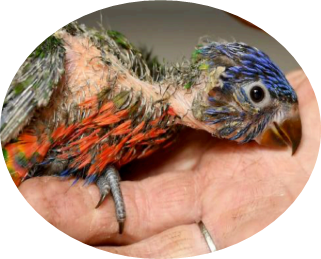You Can Make A Difference.
Donations and Memberships If you have useful items to donate, please see our wishlist page for information on how to get these items to us. Direct donations can be made to: We are now also on Give Now. On large donations PayPal charges significant fees, and I'd rather the money you donate go towards the purchase of animal feed, bedding materials, etc. - every cent counts! |
  |
 A Rainbow Lorikeet attacked by a cat. | Safe Cat, Safe Wildlife The number of wild animals that cats kill is astronomical. We estimate 95% of animals we rescue have been injured or affected by cats. There is a simple solution, keep your cats indoors or in an outdoor enclosure. This will not only keep wildlife safe but keep cats safe as well while still allowing them play and explore. Cat owners can install barriers along their fences to stop them escaping for as little as $200. When outdoors, even when contained, use bell collars. Read more about the threat of cats to wildlife here |
Water for Wildlife In the summer, leave water for wildlife. - Use shallow bowls that will not tip over when the animals drinks from it
|
|
| Tree Nets Fruit tree netting that isn't secure can trap and kill flying foxes and birds. If you wish to use netting to safeguard your fruit, only use wildlife-safe netting. When fully stretched, netting with a mesh aperture (hole size) of 5mm x 5mm or less is safe. It is not wildlife safe if you can poke a small finger through the net. - Only use netting with a mesh aperture (hole size) of 5mm x 5mm or less |
| Don't Feed Wildlife It’s important to remember not to feed wildlife. Feeding wildlife can: - Alter the natural behaviour of wildlife Bread and mince meat in particular can cause severe damage to wildlife. Feeding adult wildlife bread means their young can be born with disabilities since they are not receiving the correct nutrition, alternatively, feeding the young bread could cause them health issues as they are not getting the correct meals from their parents. Mince meat does not contain protein or calcium and can cause serious deficiencies. |